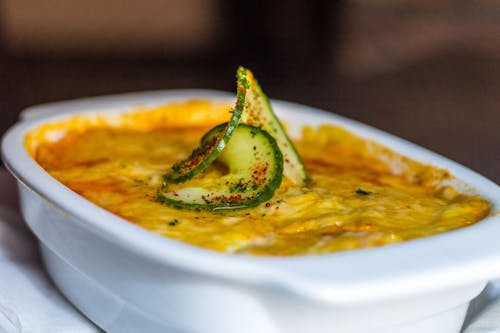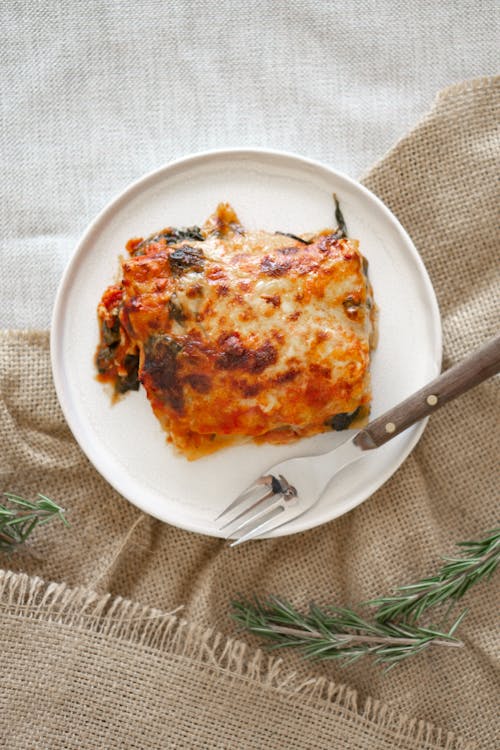Lasagna, a rich and hearty dish layered with pasta, cheese, and savory fillings, has earned its place as a beloved staple in Italian cuisine and kitchens worldwide. Its versatility and comforting flavors make it a favorite for family dinners, special occasions, and everything in between. This article explores the origins of lasagna, its cultural significance, and provides a detailed recipe for you to create this delectable dish at home.

The Origins and Cultural Significance of Lasagna
Lasagna has a storied history that dates back to ancient times. While its exact origins are a subject of debate, it is widely believed to have been inspired by a similar dish from ancient Greece called “Laganon,” which consisted of layers of pasta and sauce. The term “lasagna” itself comes from the Greek word “lasanon,” meaning a pot or chamber, which later evolved in Latin to refer to a cooking pot.
- Italian Roots: Lasagna as we know it today originated in Italy, with the most famous version coming from the Emilia-Romagna region. Traditional Italian lasagna features layers of pasta, ragù (meat sauce), béchamel sauce (white sauce), and Parmigiano-Reggiano cheese. Each region of Italy has its own variation, showcasing the country’s rich culinary diversity.
- Global Popularity: Lasagna’s comforting layers and rich flavors have made it a global favorite. It has been adapted and embraced by different cultures, each adding its own twist to the classic recipe. In the United States, for example, lasagna often includes ricotta cheese and mozzarella, creating a creamy and gooey texture.
Recipe: Classic Italian Lasagna
Creating a classic Italian lasagna requires a bit of time and effort, but the results are well worth it. This recipe combines traditional ingredients and techniques to produce a delicious, authentic lasagna.
Ingredients
For the meat sauce (ragù):
- 2 tablespoons olive oil
- 1 large onion, finely chopped
- 2 cloves garlic, minced
- 1 pound ground beef
- 1 pound ground pork
- 1 can (28 ounces) crushed tomatoes
- 2 tablespoons tomato paste
- 1 cup beef broth
- 1 teaspoon sugar
- 1 teaspoon dried oregano
- 1 teaspoon dried basil
- Salt and pepper to taste
For the béchamel sauce:
- 4 tablespoons butter
- 4 tablespoons all-purpose flour
- 4 cups whole milk
- Pinch of nutmeg
- Salt and pepper to taste
For the lasagna assembly:
- 1 pound lasagna noodles
- 2 cups grated Parmigiano-Reggiano cheese
- 2 cups shredded mozzarella cheese
- Fresh basil leaves for garnish (optional)
Instructions
- Prepare the Meat Sauce:
- Heat olive oil in a large pot over medium heat. Add the chopped onion and garlic, and sauté until softened and fragrant, about 5 minutes.
- Add the ground beef and pork, breaking them up with a spoon. Cook until browned and no longer pink, about 10 minutes.
- Stir in the crushed tomatoes, tomato paste, beef broth, sugar, oregano, basil, salt, and pepper. Bring to a simmer, then reduce the heat to low and let it cook for 1 to 1.5 hours, stirring occasionally, until thickened and flavorful.
- Prepare the Béchamel Sauce:
- In a medium saucepan, melt the butter over medium heat. Add the flour and whisk continuously to form a smooth paste (roux). Cook for 2-3 minutes without letting it brown.
- Gradually whisk in the milk, continuing to whisk to prevent lumps. Bring to a gentle boil, then reduce the heat to low and simmer until the sauce thickens, about 10 minutes.
- Season with nutmeg, salt, and pepper. Remove from heat.
- Cook the Lasagna Noodles:
- Bring a large pot of salted water to a boil. Add the lasagna noodles and cook according to the package instructions until al dente. Drain and rinse with cold water to prevent sticking. Set aside.
- Assemble the Lasagna:
- Preheat your oven to 375°F (190°C).
- Spread a thin layer of meat sauce on the bottom of a 9×13-inch baking dish.
- Place a layer of lasagna noodles over the sauce, followed by a layer of béchamel sauce, a sprinkle of Parmigiano-Reggiano cheese, and a layer of meat sauce. Repeat these layers, ending with a final layer of béchamel sauce and a generous topping of mozzarella cheese.
- Cover the baking dish with aluminum foil and bake in the preheated oven for 25 minutes. Remove the foil and bake for an additional 20-25 minutes, until the top is golden and bubbling.
- Serve the Lasagna:
- Allow the lasagna to rest for 10-15 minutes before slicing. Garnish with fresh basil leaves if desired. Serve hot and enjoy!

Conclusion
Lasagna is more than just a meal; it’s a comforting dish that brings people together. Its rich history, cultural significance, and endless adaptability make it a beloved favorite around the world. Whether you’re making a traditional Italian version or experimenting with your own variations, lasagna is sure to delight and satisfy. So gather your ingredients, follow the recipe, and savor every delicious layer of this timeless classic.














